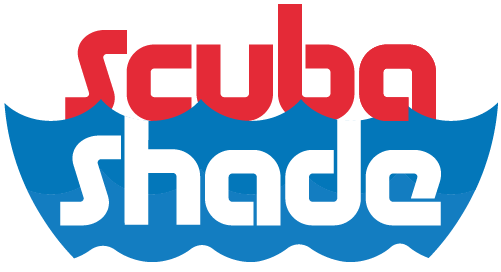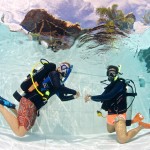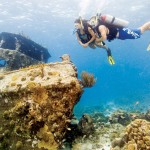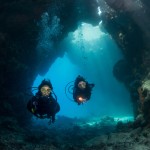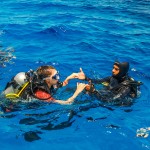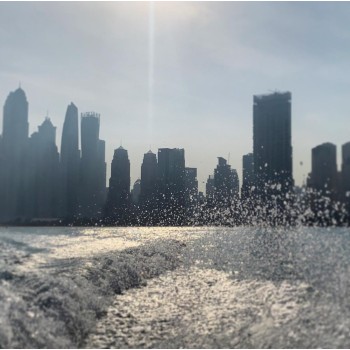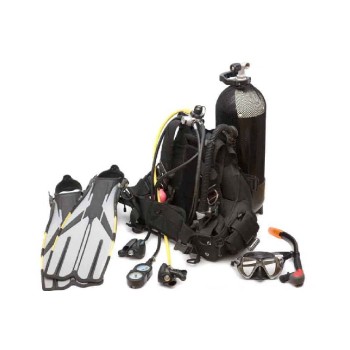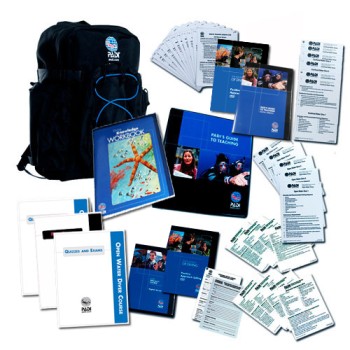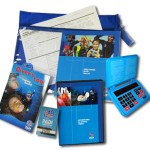Musandam Peninsula is a prime diving destination, In general the most colorful corals and reef life are found in Musandam, provides fine coral reef diving. Plankton rich waters attract over 900 species of fish, ranging from tiny cleaner wrasse through to whale sharks.
Depth: 10-18m
Difficulty: Open Water Divers
Great exploring and a wide variety of marine life awaits in these limestone caverns.
For interesting diving in underwater caverns, start either at 60m from the exit point at Ras Sannat, where a cave is visible from the surface. or go 500m from the pointed rock stack at Khor Mala, where you'll find the caves below the surface. Erosion by the sea has cut these caves deep into the limestone rock face. The main chamber is an undercut section that runs about 15 to 20m into the rock. The bottom, at about 10m, is sandy and marked with boulders. There are several small recesses (at 18m) at the back of the main chamber.
Marine life
Enter slowly, looking for stingrays and resting sharks on the sandy bottom. As you move into the caves, large shoals of golden cardinal fish will form curtains of red and silver as they guard the deeper crevices. The caves attract many varieties of small fish seeking safety and food. Cleaner shrimps hide in the hollows. These white and brown banded shrimps can usually be seen by their tentacles sticking out of their hiding places. If you're lucky, you may spot some spiny lobsters hiding deep in the cracks. At night, octopus and turtles rest on the bottom.
Depth: 12-60m
Difficulty: Open Water Divers
Boulders, limestone caverns, abundant reef life and a nearby island to chill out on.
A great dive North of Dibba, Lima Rock, amid a plethora of coral and marine life, marks the southern entrance to Lima Bay. This small island is a pinnacle of limestone rock, about 300m long by 200m wide with steep, jagged sides. The waves have undercut the rock in places, leaving shallow caves and deep lissures. Sheer cliffs drop almost vertically to a depth of about 12m, then boulders run steeply down to a sandy bottom at more than 60m. Check tides and expect currents, including downward currents.
Marine life
On the southern side of the island, there are a couple of relatively deep caves, one of which used to be the home of a 2.5m nurse shark, now only seen very occasionally. At the south-eastern end of the island, a massive boulder guards the easternmost tip of the island. If the currents are mild, wait on this monolith and look out into the deep water for tuna, jacks, sharks and devil rays. You may even see a whale shark or a sunfish. Between 12 and 20m, the boulder field is covered with hard corals (table, stag horn, brain and boulder coral), and patches of soft corals (orange and pink teddybear coral). The marine life is abundant, with large shoals of reef fish. At 20m and deeper, abundant yellow and green colored black coral, and numerous clumps of purple coral appear between the patches of sand. Look out for the yellow-mouthed morays with their vivid, colorful markings. Moving deeper towards the shelving sand, white tip sharks, marble rays, torpedo rays and leopard sharks are often seen resting on the bottom. On the north side, steep walls drop down to the sand at 20m. This side of the island is in shade from mid morning onwards. Keep an eye open for critters and nudibranchs. They vary in size from 2mm to 20cm, and are very colorful. The island is also home to a variety of birds such as ospreys, swifts and sooty falcons that frequent the high ramparts of the rock, making it an interesting location to wait between dives.
Depth: 6-50m+
Difficulty: Open Water Divers
The south bay and the east side are the best dive sites on this island, but be aware of currents. Go when currents are mild or running south. Descending to 50m from the south east corner is a rocky outcrop that separates its two dive sites. Hanging in the current are jacks, barracuda and tuna. The east side dive consists of a magnificent reef of stag horn and table coral, dropping in steps from 6 to 20m, from the rock to the northern end of the island. The south bay consists of fallen rock covered in coral that descends to a sandy slope at 20m. The sand continues downwards past 50m. Sunfish, huge schools of snapper, turtles, barracuda, large honeycomb moray eels, rays, sharks and nudibranchs can be seen here.
Depth: 4-24m+
Difficulty: Open Water Divers
Ras Bash in is at the northern headland of Shaboos Bay and it comprises a sandy bottom that becomes a sloping reef covered with a vast array of vibrantly colored soft corals. There are always lots of reef fish darting around. Start the dive with your right shoulder facing the reef (depending on the current) and dive towards the head of the bay. The regulars you should look out for include: batfish, butterfly fish, angel fish, mantis shrimp, eels and triggerfish. There are some beautiful corals at the point where the rock drops to 25m deep. Watch out for the pelagics cruising around as you round the point, especially early in the morning or towards dusk.
Depth: 6 - 40m
Difficulty: Open Water Divers
This site runs 500m into the bay from the north head land tip at the entrance to Khor Habalayn. Dive starting inside the bay just before the headland and swimming around the corner in a northerly direction, or reverse the profile on an ebbing tide. Note that it's in shadow by late afternoon. The sheer rock wall drops 15 to 20m to the sandy bottom, which is strewn with boulders. Follow the sand down and swim out a little, you'll reach a depth of 40m. The rock walls and boulders are covered in black coral and the big pelagic fish tend to gather around the head land.
Depth: 6 - 30m
Difficulty: Open Water Divers
A tall peak resembling a lighthouse dominates this cliff-walled bay. Ospreys perch high above the water surveying the dive boats. Rocks and boulders have tumbled down into the sea and onto steeply shelving sand at about 20m, and if you swim out the depth is more than 30m. You may see feeding stingrays filtering the sand and causing sand storms. Undercutting of the rock walls and large boulders has created numerous overhangs and small caves (always good places to search for unusual marine life) while yellow and purple coral clings to the rocks. This is a colorful dive site with lots of large fish.
Depth: 32m
Difficulty: Advanced Divers
This site has a sloping coral reef down to a sandy bottom where you can see shoals of barracuda and fusiliers, batfish, cuttlefish, lobsters and turtles. There are beautiful soft corals. To get the best view, start your dive entry from the interior of the bay and swim east towards Ras Samid. Ras Samid is in Khor Qabal and drops off to 30m. Be wary of the fishing net in the area, though it does attract quite a lot of marine life. This is a calm area to dive, but bear in mind that th is is not a very popular site as the military base is quite close.
Depth: 6 - 50m
Difficulty: Open Water Divers
This dive site is around the headland on the south entrance to Khor Habalayn. The direction of the current will decide which side you will dive, but both are good. The site consists of fallen rock and coral with patches of sand below 20m. Try to make your way to the point of the headland and watch the trevally and tuna feeding in the main current stream. Whale sharks also like to visit here. A dhow sank here years ago and it's still on the sand at 50m, making a great site for technical divers. Schools of devil rays are also regularly encountered on this site as well as the rare but amazing sunfish (also known as mola mola). Also watch for the cleaning stations, where large fish wait for smaller cousins to pick off their parasites.
Depth: 5-20m
Difficulty: Open Water Divers
Another great Musandam dive, this site is practically a mini zoo.
With its distinctive undercut top, this isolated stack lies 3km offshore, north of Lima. It's about 50m in diameter and its sides drop vertically to a mixed rock and sand seabed. The rocky bottom runs in ridges to the west, north and east, forming sandy-bottomed gullies. The depth of these gullies varies from 15-20m around the base of the rock, when they slope off to the southeast, descending more than 50m.
Marine life
The Stack is a gathering point for a great variety of shoaling fish life. Close to the rock you'll find numerous reef fish, while further out are jacks, trevally, tuna, barracuda and, if you're lucky, rays, sharks and huge nudibranchs. Seahorses can be seen on the tip of the eastern ridget at about 28m. Soft and hard corals abound; green colored black coral and purple soft coral whips predominate, and together with the pink and orange teddybear corals, they create a kaleidoscope of color. The rocks are home to fanworms, featherstars, juvenile crayfish and anemones. Look under overhangs and in hollows for black or red lionfish, but take care as these fish are poisonous. Stingrays can be seen feeding in the sand or resting under boulder coral overhangs. You also have a good chance of seeing leopard sharks, whale sharks, torpedo rays, devil rays, eagle rays and schools of yellow tail barracudas on this site.
Depth: 5-12m
Difficulty: Open Water Divers
A great choice for a second dive of the day, this little gem offers snorkelers and divers plenty to see.
Located in Lima Bay, Pearl Island lies close to shore, just north of Lima. The water off the east tip of this rocky island is about 12m deep, and it gradually becomes shallower over the sand bar on the west side. Coral reef surrounds most of the island, descending gently from a depth of 5m to a sandy bottom at about 12m.
Marine life
The reef is a mixture of hard and soft corals, with boulder, brain, cauliflower and daisy coral being the predominant hard corals, along with some orange and pink teddybear coral. The island attracts a huge variety of small reef fish, and at certain times of the year, great colonies of murex shells can be seen mating and laying their straw like eggs. The first thing you'll hear as you submerge are the parrotfish crunching the coral. As you approach these pink, blue and green pastel colored fish, they swim off leaving a trail of coral particles. There are several patches of anemones dotted around the island, and almost each one is attended by its resident clownfish. If you're wearing brightly colored gloves, especially yellow, and wave them near these little clowns they'll probably try to attack. The assaults are usually harmless (although for a small fish, they can deliver a nasty bite), and the fish soon tire of the fun and return to the safety of their poisonous hosts.
Depth: 5-16m
Difficulty: Open Water Divers
A shallow, colorful site with plenty of marine life, that's best dived in the early hours of the morning.
This site starts at the point of Ras Hamra and runs west along the north cliff face. It's a north-facing site and lies in shade by the early afternoon, so to see this coral wonderland, dive early in the morning. Several large boulders break the surface near the headland, and the rest of the terrain consists of fallen rock and coral reef that drops to a sandy bottom. The boulder coral on this site is extensive, running along the side of the cliff from 5m down to 16m, where the coral reef runs down to the sandy bottom. Every gap is filled with corals, from brain and daisy to tables of stag horn and great clumps of cauliflower coral fighting for space between the boulder coral.
Marine life
This is a good site for reef fish as there are lots of hollows and gaps where the fish dart in and out, playing hide and seek. You'll often see turtles resting between the clumps of coral. Look into dark holes for the red striped squirrelfish that tend to wait in shoals under the overhangs and in dark corners of the coral. Little fish, with big eyes, they like to stay in the safety of the shadows. Deeper in the water there are several species of grouper; some are brown with blue spots, others are red with blue spots. Gliding over the tops of the corals are the real dandies of the reef; emperor angelfish.
Depth: 5-45m
Difficulty: Open Water Divers
Two sites for the price of one - and double the enjoyment for snorkelers and divers.
The Ras Lima headland has two good dive sites for you to choose from; the northfacing site in Lima Bay and the east bay just south of the headland. The north site is an interesting wall dive, with a steep cliff face that drops down to 10-15m in a tangle of fallen boulders. The east bay is located under the east headland cliffs. These are nearly vertical and plunge into the water to a depth of 6-8m where the coral reef gently runs down to the sand at 15m plus. Scattered throughout both sites are a number of large rocks, some of which form shallow caves.
Marine Life
This is a good site for smaller reef fish and big pelagic fish. Devil rays have been seen here on several occasions, and the area is probably a cleaning station for them. Sea horses can also be found amongst the black corals. From 5 to 15m, corals cover most of the boulders that have fallen from the cliffs above. The boulder corals are large, with lots of cavities that make a perfect hideaway for fish like the blue triggerfish. Triggerfish don't seem to mind leaving parts of their bodies exposed when they are hiding, and you can often see bits of those distinctive, bright blue tails protruding from their hideaways when you're swimming overhead. Stag and table coral fill the gaps between the boulder coral, but as you go deeper, teddybear and purple corals start to take over. At 12 to 16m you'll find yellow-colored black coral.
Depth: 6-35m
Difficulty: Advanced
These islands and channels make for a fun drift dive when the tide is running.
A collection of four islands make up Ras Marovi. The two larger islands run in a line south-east from the mainland of Jebel AI Khatamah. The first large island is separated from the mainland by a 100m channel and the second large island has a 200m channel dividing it from the first island. The two smaller islands run south from the most seaward island. The cliffs of the two larger islands drop down vertically into the water. On the north face of the inner island, the wall is sheer all the way down to 30m. The west coast of the seaward island is a beautiful sloping coral reef, which serves as a cleaning station for visiting fish. It's a great site for the third dive of the day, or a night dive. The coral garden slope and the cavern with its resident cowtail stingray are highlights
Marine life
There are lots of soft corals on these sites, including plenty of orange, pink and red teddybear coral. Purple and yellow coloured black coral is also prevalent. Soft lettuce coral is also abundant, and turtles come to feed and mate here. The islands attract a lot of reef and pelagic fish. In the rock walls there are several shallow caves where large hammour lie in wait for their prey. Leopard sharks, zebra sharks, grey reef and white-tipped reef sha rks and dolphins are regular visitors, while deeper down, stingrays rest on the sandy bottom. There have been several sightings of manta rays around the outer island.
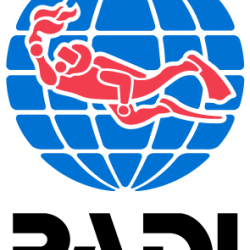
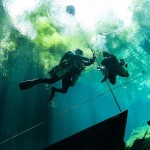
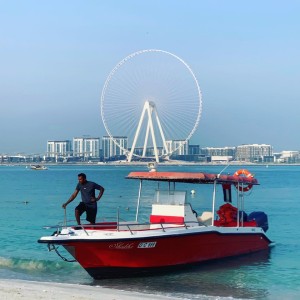
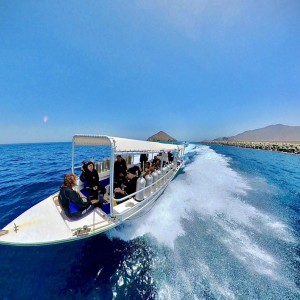
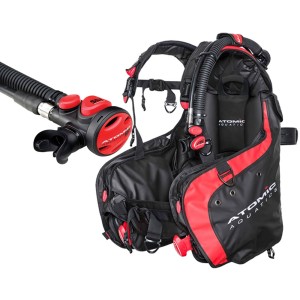
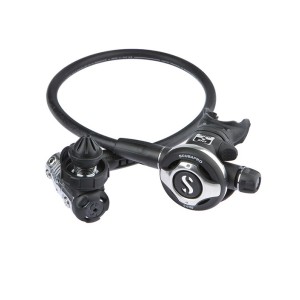
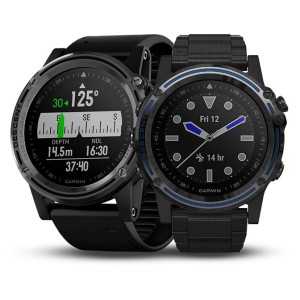
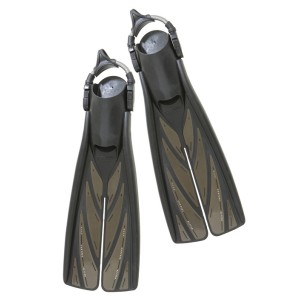
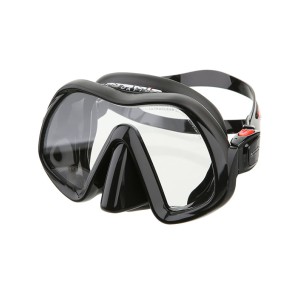
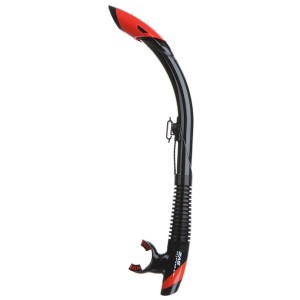
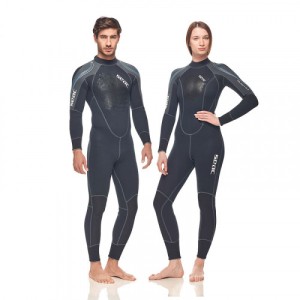
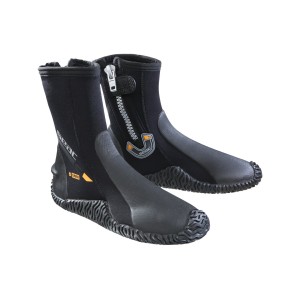
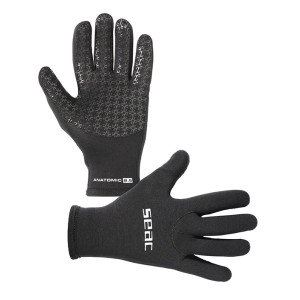
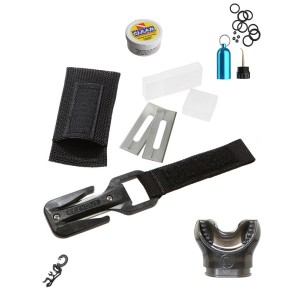

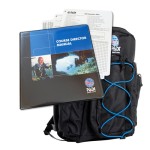



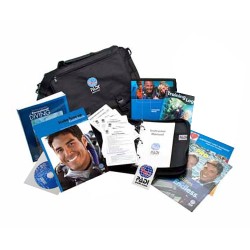
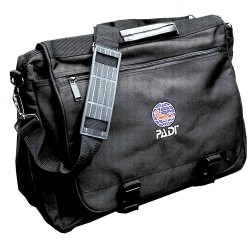
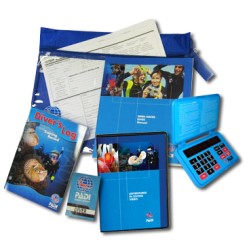
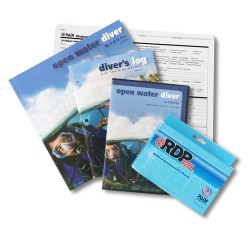
-870x812-250x250w.jpg)
-870x812-250x250w.jpg)
-870x812-250x250w.jpg)
-870x812-250x250w.jpg)
-870x812-250x250w.jpg)
-870x812-250x250w.jpg)
-870x812-250x250w.jpg)
-870x812-250x250w.jpg)
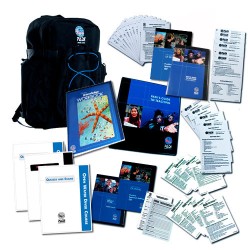

-870x812-250x250w.jpg)
-870x812-250x250w.jpg)
-870x812-250x250w.jpg)
-870x812-250x250w.jpg)
-870x812-250x250w.jpg)
-870x812-250x250w.jpg)
